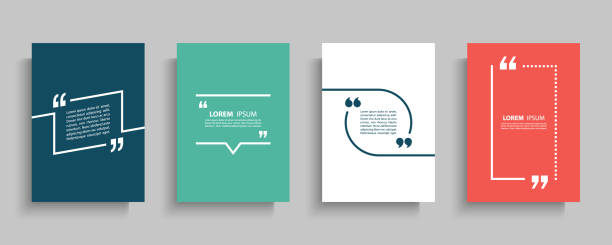How Can You Show Transparency In Your Writing (12 Best Ways)
In the age of information, where trust and credibility often hang in the balance, the concept of transparency in writing has taken center stage.
It’s not just a buzzword but a potent tool for building and maintaining strong connections with readers. Transparency in writing is about honesty, openness, and authenticity. It’s a commitment to laying bare the intentions, motivations, and sources that underlie the words we craft.
Whether you’re a journalist, a business communicator, an academic, or a creative writer, the principles of transparency apply universally.
In this exploration, we’ll delve deep into the art of transparent writing, examining the benefits, key elements, techniques, challenges, and practical tips that can transform your writing into a beacon of trust and clarity in an increasingly complex and convoluted world of information.
So, how can you show transparency in your writing? Let’s embark on a journey to discover the answers.
How Can You Show Transparency In Your Writing
You can show transparency in your writing by following these step-by-step processes:
Choose Clear and Concise Language
Use straightforward and unambiguous language to convey your ideas. Avoid jargon, complex sentence structures, or excessive vocabulary that may obscure your message.
Cite Sources and References:
Whenever you use information, data, or quotes from other sources, provide proper citations and references. This not only acknowledges your sources but also allows readers to verify your claims.
Use Evidence and Examples:
Support your arguments with relevant evidence and real-world examples. This demonstrates that you’ve done your research and provides a concrete basis for your claims.
Acknowledge Counterarguments:
Address opposing viewpoints or potential criticisms of your argument. Acknowledging counterarguments shows that you’ve considered alternative perspectives and strengthens your credibility.
Explain Your Reasoning:
Be explicit about how you arrived at your conclusions. Describe your thought process, methodology, and the logic behind your arguments. This helps readers understand the basis of your claims.
Avoid Plagiarism:
Never copy someone else’s work without proper attribution. Plagiarism undermines transparency and trust in your writing.
Provide Context:
Make sure to offer context for your writing. Explain why your topic is relevant, the background information readers need, and any relevant history or context.
Use Headings and Subheadings:
Organize your writing with clear headings and subheadings. This helps readers quickly navigate your text and locate specific information.
Be Open About Biases or Conflicts of Interest:
If you have any biases or conflicts of interest that might influence your writing, disclose them upfront. Transparency about potential biases fosters trust.
Invite Feedback:
Encourage readers to provide feedback, ask questions, or seek clarification. Being open to critique and discussion demonstrates your commitment to transparency.
Proofread and Edit:
Carefully proofread your work to eliminate errors and ensure clarity. Well-edited writing is more transparent and easier to understand.
Provide Contact Information:
If appropriate, offer your contact information so that readers can reach out with questions or for further discussion.
By following these steps, you can effectively demonstrate transparency in your writing, making it more trustworthy and understandable to your audience.
The Concept of Transparency
In the world of communication, the concept of transparency is like a lighthouse in a sea of information, guiding us through the fog of ambiguity and obfuscation.
It’s not just a buzzword; it’s the bedrock of trust and understanding. Transparency is the art of stripping away the cloak of complexity and revealing the naked truth beneath.
It’s the literary equivalent of a glass-bottom boat, allowing readers to dive deep into the writer’s intentions and motivations.
Like a magician divulging their secrets, transparency lays the cards on the table, inviting readers to a game where everyone knows the rules. In a world rife with misinformation, transparency is the clarion call for authenticity, integrity, and clarity in the grand theater of words.

Exploring the concept of transparency
Exploring the concept of transparency is akin to embarking on an intellectual treasure hunt, seeking the elusive jewels of clarity and openness.
It’s a journey through the intricate labyrinth of human communication, where words and ideas often play hide and seek. Transparency serves as our compass, illuminating the path towards understanding and trust.
With each step, we uncover the layers of meaning, dissecting the intention behind the words, and unveiling the motivations that shape our narratives.
This exploration isn’t merely an academic exercise; it’s a profound revelation of the intricate dance between author and audience, a vital thread in the tapestry of effective communication.
It challenges us to question, to dig deeper, and to embrace the vulnerability that comes with revealing one’s thoughts and motives.
In the end, the concept of transparency is an intellectual adventure that rewards those who dare to venture into its depths with a richer, more profound understanding of the world through words.
Transparency in various forms of writing
Transparency manifests itself uniquely across various forms of writing, adapting to the specific demands and expectations of each genre.
In journalism, transparency acts as the guardian of credibility, where reporters lay bare their sources and methodologies to ensure the public’s trust.
In business communication, it’s the bridge that connects corporate entities with their stakeholders, emphasizing open and honest dialogue, from financial disclosures to corporate social responsibility reports.
In academic writing, transparency is the backbone of scholarly discourse, requiring rigorous citation and attribution, giving credit to those who came before.
And in the world of creative writing, transparency can be a tool for authenticity, with authors revealing their innermost thoughts and emotions to captivate readers with the rawness of the human experience.
While the shades of transparency may vary, its essence remains a cornerstone, ensuring that honesty and clarity transcend the boundaries of diverse writing styles.
Benefits of Transparency
The benefits of transparency are like rays of sunlight breaking through the storm clouds of secrecy and mistrust. They illuminate the path to a world where honesty reigns supreme.
Transparency is the elixir of trust, nurturing it like a delicate flower in the garden of human relationships. It bestows upon us the gift of credibility, transforming mere words into veritable promises etched in stone.
In the realm of business, it fosters connections that are as strong as steel, as stakeholders revel in the authenticity of shared information. In a world inundated with information, transparency acts as the North Star, guiding us through the labyrinth of uncertainty.
It is the guardian of accountability and the catalyst for progress, ensuring that knowledge is not a privilege but a right.
In essence, the benefits of transparency are the wings that allow the bird of truth to soar, transcending the cage of doubt and soaring towards the boundless sky of understanding.
Building trust with the audience
Building trust with the audience is akin to constructing a sturdy bridge between the writer and the reader, one that can withstand the weight of words and ideas.
Trust is the bedrock of effective communication, and it’s nurtured through transparency, honesty, and reliability.
When writers share their thoughts openly and candidly, when they acknowledge their biases and limitations, and when they consistently deliver accurate information, a reciprocal relationship of trust begins to form.
This trust isn’t just about the content itself but also about the assurance that the writer has the audience’s best interests at heart.
It’s an unspoken pact, where the audience believes in the writer’s intentions and integrity, and in return, the writer offers a genuine and reliable source of information.
Building trust is a continual process, but once established, it forges an unbreakable connection between writer and audience, making the journey of communication smoother and the impact of words profound.

Enhancing credibility and authority
Enhancing credibility and authority is like bestowing a writer with a suit of armor, making their words resound with unwavering strength and influence. Credibility is the cornerstone of a writer’s reputation, and it’s cemented by a consistent track record of accurate, well-researched, and transparent content.
When readers perceive a writer as credible, they’re more likely to regard their words with respect and trust. Authority, on the other hand, is a writer’s crown, earned through expertise and a deep understanding of their subject matter.
Together, credibility and authority elevate a writer’s work to a level of undeniable influence, allowing them to shape opinions, inspire action, and lead conversations.
This dynamic duo is the bedrock upon which a writer can stand, not as a mere narrator, but as a true leader in their field, steering the ship of knowledge with clarity and purpose.
Encouraging constructive feedback
Encouraging constructive feedback is akin to opening the door to a room filled with diverse perspectives and insights, inviting others to join in the conversation.
In the realm of writing, it’s an essential practice, as it not only promotes growth and improvement but also solidifies the writer’s commitment to transparency and a willingness to learn.
Constructive feedback is the fertile ground in which ideas take root, evolve, and flourish. It’s an acknowledgment that no piece of writing is ever truly finished, and that the collaborative effort of refining thoughts and communication is a continuous journey.
When writers actively seek and embrace constructive feedback, they demonstrate humility and a genuine desire to connect with their audience. In doing so, they pave the way for a richer and more nuanced dialogue, fostering an environment where the writer, the reader, and the words themselves can all evolve and thrive.
Elements of Transparent Writing
The elements of transparent writing are like the finely tuned instruments of an orchestra, each playing its part in harmonious disclosure. Clear and honest language becomes the conductor, orchestrating a symphony of words devoid of deceit and complexity.
Proper citation and attribution act as the sheet music, ensuring that every note has a source, a history, and a context.
Acknowledging biases and potential conflicts of interest serves as the spotlight, illuminating the corners where writer subjectivity and external influences lurk.
Providing context and background information becomes the foundation, offering the audience a solid ground upon which to stand, comprehend, and engage.

Clear and honest language
Clear and honest language is the bedrock of effective communication, like a crystal-clear stream in the wilderness of words. It embodies the principle of transparency, ensuring that every word and phrase serves as a bridge between the writer’s thoughts and the reader’s understanding.
Clear language eliminates the barriers of jargon, obfuscation, and unnecessary complexity, inviting readers to traverse the terrain of ideas with ease.
It’s the embodiment of sincerity, where words are chosen thoughtfully to convey the truth without distortion.
In a world where information can be murky and convoluted, clear and honest language acts as a lighthouse, guiding readers safely through the fog of ambiguity, and forging a connection built on trust and comprehension.
Citation and attribution
Citation and attribution are the guardians of intellectual integrity in the world of writing, akin to the signposts that guide travelers on a winding path.
They represent the writer’s commitment to transparency and respect for the contributions of others. Proper citation is the act of acknowledging the sources of information, giving credit to the intellectual journey that shaped a piece of writing.
It’s not just a formality but a gesture of gratitude to those who have paved the way. Attribution, in turn, is the act of linking words to their origins, connecting the reader to the vast tapestry of human knowledge.
These elements are the invisible threads weaving together the fabric of credibility and trust in writing, ensuring that ideas are presented in a context that allows readers to explore the pathways that led to their creation.
In essence, citation and attribution are the instruments of humility and intellectual honesty, safeguarding the intellectual ecosystem where every idea finds its place and purpose.

Providing context and background information
Providing context and background information is akin to constructing a strong foundation for the structure of understanding in writing.
It’s the act of not just presenting isolated facts and ideas, but also the broader framework in which they exist. Context and background information serve as the guideposts, leading readers through the intricate landscape of knowledge, helping them make sense of the subject matter and its relevance.
Whether it’s historical context in a research paper, cultural background in a storytelling narrative, or situational context in a news article, these elements enrich the reading experience by answering the essential questions of “why” and “how.”
They invite readers to delve deeper into the material, creating a more immersive and engaging connection with the written word.
In essence, providing context and background information is the map that makes the journey of reading not just informative, but also truly enlightening.
Techniques for Demonstrating Transparency
Techniques for demonstrating transparency are the secrets to unlocking the enchanted door to authenticity in the realm of writing. It’s like a magician revealing the tricks of the trade, a writer’s playbook for building trust and dismantling the veils of obscurity.
Providing sources and references is akin to leaving a trail of breadcrumbs for readers to follow, a treasure map leading to the wellspring of knowledge.
Acknowledging limitations and uncertainties becomes a courageous act of vulnerability, showing that even in the quest for truth, there are uncharted territories.
Openly sharing research methods and processes is the writer’s laboratory notebook, letting readers peer into the crucible where ideas are forged.
And interacting with the audience, well, that’s the magic portal where words transcend the page, allowing the writer and the reader to engage in a dance of shared understanding.
These techniques are the incantations that transform writing into a dynamic, interactive, and transparent experience, where the art of communication becomes a masterpiece of openness and trust.
Providing sources and references
Providing sources and references is like offering a trail of breadcrumbs in the vast forest of information. It’s the art of grounding words in a web of knowledge, ensuring that the foundation of a piece of writing remains sturdy and reliable.
Each source and reference is a beacon that illuminates the path to truth, allowing readers to explore the origins of ideas and verify the credibility of the information presented.
This act of transparency not only fosters trust but also encourages critical thinking, as readers are empowered to navigate the labyrinth of data themselves.
In an age of information overload, providing sources and references is the writer’s pledge of intellectual honesty, guiding readers on a journey where facts are fortified, and ideas are fortified by the collective wisdom of human understanding.
Acknowledging limitations and uncertainties
Acknowledging limitations and uncertainties in writing is a powerful act of intellectual honesty and humility. It’s like taking a deep breath before a plunge into the unknown, recognizing that even the most well-researched and thought-out pieces of writing may have areas of obscurity and imperfection.
By openly addressing these limitations, writers not only demonstrate transparency but also engage readers in a collaborative exploration of knowledge.
It’s an invitation to join in the quest for truth, acknowledging that certainty is a rare gem, often hidden beneath layers of doubt and complexity.
When writers embrace and share their uncertainties, they invite critical thinking, encouraging readers to question, challenge, and contribute to the ongoing conversation.
It’s a reminder that, in the grand tapestry of human understanding, the most vibrant threads are those that remain uncharted, waiting to be woven into the fabric of collective knowledge.
Interacting with the audience
Interacting with the audience is the vibrant heartbeat of the writing process, transforming a static monologue into a dynamic dialogue.
It’s the moment when the writer extends an open hand, inviting readers to step into the world of words and engage in a genuine conversation.
This interaction is a powerful bridge, where questions and feedback become the building blocks of understanding and improvement.
It’s the essence of transparency, demonstrating that writing is not a solitary act but a shared experience. Through responses and dialogues, writers foster a sense of community and respect, where diverse perspectives and ideas converge.
In this exchange, words take on a life of their own, forging connections that extend far beyond the page, proving that writing is not just about the author’s voice but the harmonious chorus of voices seeking to learn, share, and connect.

Challenges and Ethical Considerations
Challenges and ethical considerations in writing are the shadowy corners of the writer’s labyrinth, where the quest for transparency encounters the complexities of human morality and responsibility.
Like tightrope walkers over an abyss, writers must balance the desire to reveal with the need to protect privacy and confidentiality.
It’s a dance of shadows and light, where the risk of oversharing and compromising personal boundaries is ever-present.
Navigating the potential backlash or criticism can be a stormy sea to cross, as every word has the power to ripple through the hearts and minds of readers.
Amidst these challenges, writers must maintain a delicate equilibrium between the demands of transparency and the ethical boundaries of respect, responsibility, and integrity.
It’s a perpetual tightrope act that reminds us that, in the world of writing, the pursuit of truth is not without its ethical compass, and the quest for transparency is an ever-evolving journey of self-discovery and integrity.
Balancing transparency with privacy and confidentiality
Balancing transparency with privacy and confidentiality is akin to treading on a tightrope suspended between openness and discretion.
In the realm of writing, where the desire for truth and transparency often collides with the need to protect sensitive information, this equilibrium becomes a formidable challenge.
It requires writers to be both revealing and circumspect, guarding the boundaries of personal and private matters, while still providing valuable insights and candid revelations.
It’s a delicate dance where lines must be drawn, and ethical considerations are paramount. Striking the right balance ensures that the writer respects individual privacy and maintains the trust of readers while still shedding light on essential issues.
In this intricate choreography, writers must navigate the often hazy terrain between public interest and private rights, acknowledging that transparency, while a noble goal, should never come at the cost of ethical responsibility and respect for the boundaries of personal space.
Dealing with potential backlash or criticism
Dealing with potential backlash or criticism is the steeled resolve that lies beneath the writer’s skin, like a suit of armor defending against the arrows of dissent.
In the world of transparent writing, where honesty can sometimes stir discomfort or opposition, writers must be prepared to face the turbulent waters of critique.
It’s a test of resilience, where words, once released, can take on lives of their own, inviting praise and protest in equal measure. However, it is also an opportunity for growth and reflection, where feedback, even when critical, can be a catalyst for improvement.
Writers must embrace the fact that not every reader will agree with their perspective, and controversy can be the spark that ignites meaningful discourse.
Ultimately, dealing with backlash and criticism is a testament to the courage of the writer, who, like a ship in stormy seas, remains steadfast in their commitment to transparency and the pursuit of truth.
Case Studies in Transparent Writing
Case studies in transparent writing are the x-ray glasses that reveal the intricate inner workings of effective communication. Like rare gems on display, these real-world examples are windows into the powerful impact of transparency in various domains.
They offer us the opportunity to dissect the art of openness in journalism, business, academia, and beyond, demonstrating how clarity and honesty can transform the dynamic between writer and audience.
Each case study is a masterclass in trust-building, where writers lay their cards on the table, and readers respond with appreciation and loyalty.
From groundbreaking investigative journalism to corporate sustainability reports, these case studies are not just pages in a book but vivid snapshots of the ever-evolving landscape of transparent writing, showcasing the diverse ways in which writers can captivate and enlighten their audience through the art of disclosure.

Practical Tips for Writers
Practical tips for writers are like the seasoned sailor’s treasure map, guiding wordsmiths through the turbulent sea of creativity with the promise of smoother voyages and richer discoveries.
These nuggets of wisdom are not just dusty scrolls from the writing guild but a contemporary GPS for the digital age, offering solutions to the challenges of the modern writer.
From crafting compelling headlines that act as lighthouses in the storm of content to the art of nurturing a daily writing routine that ensures the ship stays afloat, these tips are the compass and anchor, helping writers navigate the intricate waters of their craft.
They’re a reminder that writing is not just about the quill or the keyboard but about the journey of continuous self-improvement, where every word is a step closer to the treasure of mastery, waiting to be unearthed by those who dare to explore the uncharted territories of their creativity.
Frequently Asked Questions (FAQ) about How Can You Show Transparency In Your Writing
What is transparency in writing, and why is it essential?
Transparency in writing is the practice of being open, honest, and clear in your communication. It’s essential because it builds trust, credibility, and fosters better understanding between writers and readers.
How can I be more transparent in my writing?
You can be more transparent by using clear and honest language, citing sources, acknowledging biases, providing context, and openly sharing your research methods and processes.
What are the benefits of transparent writing?
Transparent writing can enhance your credibility, build trust with your audience, foster reader engagement, and encourage constructive feedback.
How do I balance transparency with privacy and confidentiality?
Balancing transparency with privacy and confidentiality involves being open about your process while respecting sensitive or private information. It’s crucial to maintain ethical boundaries.
Can transparent writing lead to potential backlash or criticism?
Yes, transparent writing can sometimes lead to backlash or criticism, but it’s also an opportunity for growth and meaningful discourse. Dealing with critique is an essential part of maintaining transparency.
Are there specific techniques for demonstrating transparency in writing?
Yes, techniques include providing sources and references, acknowledging limitations and uncertainties, and interacting with your audience to encourage questions and feedback.
How can I ensure transparency in different forms of writing, such as journalism, business communication, or creative writing?
Transparency principles apply to all forms of writing. For journalism, it involves proper sourcing and attribution. In business communication, it’s about openness in corporate reports. In creative writing, it’s revealing your process and intentions.
What are some practical tips for writers looking to enhance transparency in their work?
Practical tips include developing a transparency checklist, self-assessment techniques, and incorporating transparency into your writing process.
Can you provide examples of case studies in transparent writing?
Yes, case studies in journalism, business, and academia can demonstrate how transparent writing impacts credibility and trust. These real-world examples are invaluable for understanding the practical applications of transparency.
How can transparent writing contribute to constructive and meaningful conversations with your readers?
Transparent writing invites readers to engage in constructive dialogues, ask questions, and provide feedback, fostering a deeper connection and more profound understanding between writers and their audience.
Conclusion
In conclusion, transparency in writing is not merely a trend but a fundamental principle that serves as the cornerstone of effective communication in an information-rich age.
It’s the tool that builds bridges of trust between writers and readers, fostering credibility, openness, and clarity. The benefits of transparent writing are substantial, from cultivating audience engagement to encouraging constructive feedback and enhancing credibility.
As writers, we navigate the delicate dance between disclosing our intentions and safeguarding sensitive information, all while dealing with potential criticisms.
Nevertheless, with a toolkit of techniques and practical tips at our disposal, we can embark on a journey toward greater transparency in our writing.
Ultimately, transparent writing is not a destination but an ongoing process, a promise that we make to our readers to honor the integrity of the written word and the pursuit of genuine understanding.
So, whether you’re a journalist, a business communicator, an academic, or a creative writer, the path to transparent writing beckons—a path that promises not only to enlighten but to connect, enrich, and inspire.






